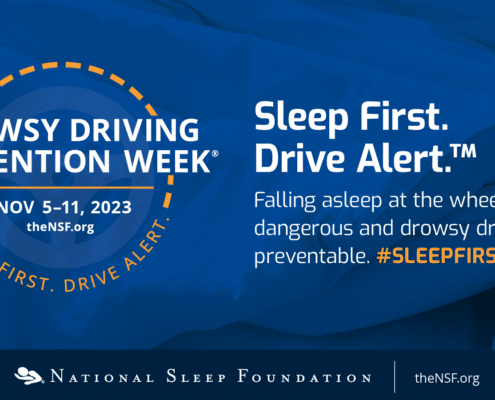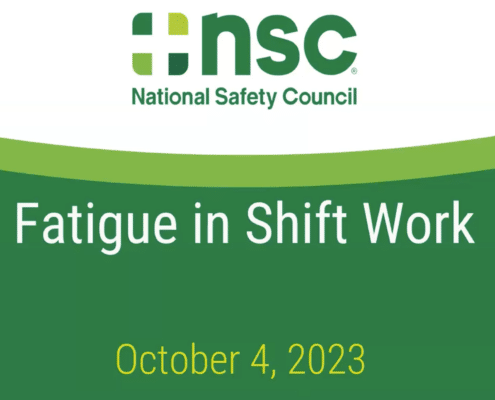Digging into Fatigue in Mining

Updated: September 28, 2020
In this blog, we’ll look at the impacts of fatigue in heavy industry, and specifically mining.
Contents
The Single Greatest Cause of Accidents Across High-risk Industries
24-7 Operations and Fatigue Risks
The Measurable Impacts of Fatigue
The Effect of Fatigue on Miners
Factors Influencing Sleep’s Restfulness
Issues for Industrial Shift Workers
The Single Greatest Cause of Accidents Across High-risk Industries
Across heavy industry, awareness of fatigue risk is growing. In industries such as construction, commercial trucking, and mining, fatigue is the single greatest cause of accidents. We’ll look at how the mining industry is affected by fatigue, and what steps the industry can take.
The “fatigue” that contributes to accidents in the mining industry refers to cognitive fatigue rather than physical fatigue from demanding physical work. Cognitive fatigue is usually caused by a lack of sleep or wakefulness outside of normal daylight hours. This kind of mental fatigue inhibits the brain’s ability to interact with the body, comparable to impairment from alcohol. As one can imagine, impairment in heavy industry is a dangerous thing.
24-7 Operations and Fatigue Risks
You don’t need to look far to see fatigue risk in the workplace. Three of the largest industrial accidents in modern history were impacted by fatigue. Fatigue was a contributing factor to the Chernobyl power plant accident, the Exxon Valdez oil tanker spill, and the BP Texas City Refinery explosion.
In industries such as transportation, mining, construction, and oil and gas, it’s common for 24/7 operations to create fatigue among workers. In many of these industries, schedules produce conditions where fatigue within the workplace is unavoidable. Following the 2016 Croydon tram derailment in the UK, one of the drivers involved commented the following:
“No one is ever fully awake. I was always in a bit of a daze and that is because the way the shift work doesn’t allow the drivers to get a regular sleep pattern.”
– Former Tram Driver, Croydon Tram Derailment, 9 November 2016
The Measurable Impacts of Fatigue
Besides the effect on cognitive and motor skills, fatigue also affects emotional wellbeing. Some might assume that fatigue only causes irritability and moodiness, but the repercussions beyond observable behaviour. When fatigue is present, anxiety, frustration, and impulsivity are all increased, impacting the wellbeing of employees and those around them.
In positions that require focused communications or attention to detail, fatigue has severe consequences. When suffering from fatigue, workers can expect to see impacts to:
- Multitasking
- The ability to recall specific events or operating procedures
- Decision making
- Emotional stability
In a dangerous work environment, a lapse in any one of these essential functions could mean disaster.
The Growing Body of Evidence
Looking at risk factors in mining operations, you can see that fatigue needs to be taken seriously. The body of evidence around fatigue risks in mining has been growing steadily for years, and so has the obligation of employers to provide a safe environment.
The earliest study we’ll look at dates from 1996 and was produced by the U.S. Bureau of Mines to improve haulage truck safety. This study’s finding was that “‘perceptual-cognitive-motor’ errors (related to the more common term, “human error”) were a causal factor in 93% of the accidents.” While no conclusive human factors were isolated in the 1996 report, it noted that future “investigations of the psychological and physiological factors of reducing operator-induced accidents” would be necessary.
Fatigue-related safety events have adverse consequences for the individual, but can also impact on co-workers, the organisation for which he or she works, and even the broader community
London Department for Transport
Since the initial studies looking at injuries in heavy industry, a more complete understanding of worker wellbeing has developed. Fatigue management systems are now common within mining operations. A 2014 article in the journal Minerals Engineering showed that adjusting work schedules in small mining operations likely improved work quality and home life for employees. The paper focuses on the need for workplace-specific solutions to resolve fatigue-related issues facing workers.
The Effect of Fatigue on Miners
In the mining industry, there are several ways that fatigue and sleep disruption can impact workers and operations. It’s estimated that as many as 65% of truck driving accidents in open pit mines are fatigue-related. This is likely caused by the impact of sleep on motor skills and cognitive abilities such as problem solving and short-term memory. Fatigued workers are not only more likely to make mistakes, they’re more likely to make errors in judgement.
Underground miners are at especially high risk for fatigue. In the article Mine Worker Fatigue and Circadian Rhythms, Max Martell looks at the ways that mining safety is impacted by fatigue and disruptions to natural sleep habits. Martell finds that underground miners are at risk of disrupted circadian rhythms during the day. A combination of overnight work schedules and days spent underground with artificial light sources further disrupts sleep patterns. Further compounding the problem is the non-reflective environments in mines. Reduced eyesight in an aging mining workforce also contributes to reduced light exposure while underground.
Other Effects of Fatigue
We see that fatigue has a direct impact on reaction time, meaning the ability to observe something and then respond to it. In tasks like driving, which requires split-second decisions to avoid accidents, even a very short delay can be disastrous.
Fatigue also increases the likelihood of microsleeps, in which someone enters a sleep state for one or more seconds before regaining consciousness. During these periods, the individual is not reactive at all, and immediate dangers can easily be missed.
Factors Influencing Sleep’s Restfulness
U.S. Army research shows us that sleep is impacted by a variety of factors, including the quality, the consistency, and the timing of your sleep.
Quality: Interruptions during sleep can have an impact on its restorative nature.
Consistency: Keeping a regular sleep and wake schedule is important for receiving the maximum benefits of sleep. This means that going to bed and
waking up at different times can have a negative impact on sleep.Time of day: Even good sleep habits can be negated by sleep that is happening at the “wrong” time of day.
Issues for Industrial Shift Workers
In all three of these sleep factors, we see immediate implications for shift workers and those working overnight. Consistent sleep habits are incredibly important, as poor sleep from a week ago or longer can impact an individual’s fatigue level. This is especially true in situations where an individual has a continuous stretch of poor sleep. It’s best to think about sleep cumulatively, and to consider sleep habits over the course of at least one week when studying fatigue levels.
Reducing fatigue means more than a single night of restful sleep. Fatigue management means:
- Adopting more consistent sleep habits that encourage regular sleep and wake times
- Sleeping for longer durations without interruptions
- Trying whenever possible to sleep at nighttime.
Predicting Fatigue
Looking at the above factors, the image of sleep perfection is seven or more hours of uninterrupted sleep at the same time every day. Because an ideal sleep schedule isn’t always possible, that raises the question of how to predict and prevent fatigue.
Among industrial workers, shifting start times are likely to affect sleep and wake times. If these workers are sleeping during the day, their quality of sleep and likelihood of waking during a sleep period are also going to be heavily impacted. A period of wakefulness won’t always be remembered by someone, but it represents a period where sleep is disrupted even if the individual is not fully conscious.
The SAFTE™ Alertness Model
The Walter Reed Army Institute of Research at the U.S. Army Medical Research Development Command developed a model for predicting fatigue based on sleep data collected the previous week. This model, known as the SAFTE Alertness Model, takes into account all of the previous factors we’ve looked at (consistency, quantity, quality of sleep), and produces a score which indicates alertness.
ReadiScores provided from this model range from 0 to 100, and individuals typically fall somewhere between 60 and 100. The higher an individual’s score, the more alert they are likely to be. This predictive score has immediate implications in the modern industrial workplace. Reaction times can be plotted on the SAFTE Alertness Model to show how quickly an individual will respond.
A ReadiScore™ of 70 corresponds to the same reaction time as an individual with a blood alcohol level equivalent to 0.08. An individual at this level would have a reaction time up to 43% longer than someone who is fully rested.
In the case of workers driving vehicles or operating heavy equipment, the need to mitigate the risks of fatigue is apparent. An individual suffering from heavy fatigue in these situations is a danger to not just themselves, but their colleagues as well.
While developed by the Walter Reed Army Institute of Research at the U.S. Army Medical Research Development Command, this model has been validated in independent studies. These studies have shown a direct relationship between scores on the scale and the likelihood and severity of workplace accidents. A study conducted by the U.S. Department of Transportation within the railroad industry showed that accidents caused by individuals below 70 on the alertness scale were up to five times more costly than those caused by individuals above 90.
The SAFTE Alertness Model continues to be used by the Federal Aviation Administration in the U.S. Department of Transportation and in the U.S. Air Force.
Readi™ Enterprise Suite
Readi Enterprise Suite was developed by Fatigue Science to help workers and organizations predict and mitigate the risks of fatigue using the SAFTE Alertness Model.
Using a wearable device, workers can self manage their fatigue by uploading sleep data to the Readi app to receive their ReadScore. This allows them to view their current risk level, and how their performance is impacted throughout the day ahead. GPS data and other biometrics are not captured in order to preserve the privacy of the individual.
Accessing ReadiSupervise allows supervisors to view anonymized Readiscores across their workforce so that they can make informed decisions around safety critical tasks. Understanding how fatigue impacts workers can reduce accidents and drive performance.
ReadiAnalytics was created for the leadership within organizations to gain anonymized data insights in order to help plan resource allocation, training, and scheduling of workers.
Further Reading
- Analysis of Occupational Accidents in Underground and Surface Mining in Spain Using Data-Mining Techniques
International Journal of Environmental Research and Public Health, Sanmiquel, et al. (2018) - Mine Worker Fatigue and Circadian Rhythms
Engineering and Mining Journal, Max Martell (2018) - Managing fatigue in mining
Australian Mining (2018) - Fatigue Risk Management Systems: A Review of the Literature
London Department for Transport - Fatigue Management in Mining – Time to Wake Up and Act
TMS Consulting - Application of fatigue management systems: small mines and low technology solutions.
Mining Engineering, Eiter BM, et al. (2014) - Haulage Truck Dup Site Safety: An Examination of Reported Injuries
U.S. Department of Health and Human Services, FC Turin, et al. (2001) - Safety Analysis of Surface Haulage Accidents
Proc 27th Annual Institute on Mining Health, Safety and Research, RF Randolph et al. (1996) - A well structured safety management system
Canadian Mining (2015)
Interested in learning more about data-driven fatigue management?
or download our free eBook on the Science of Sleep for industrial workforces


